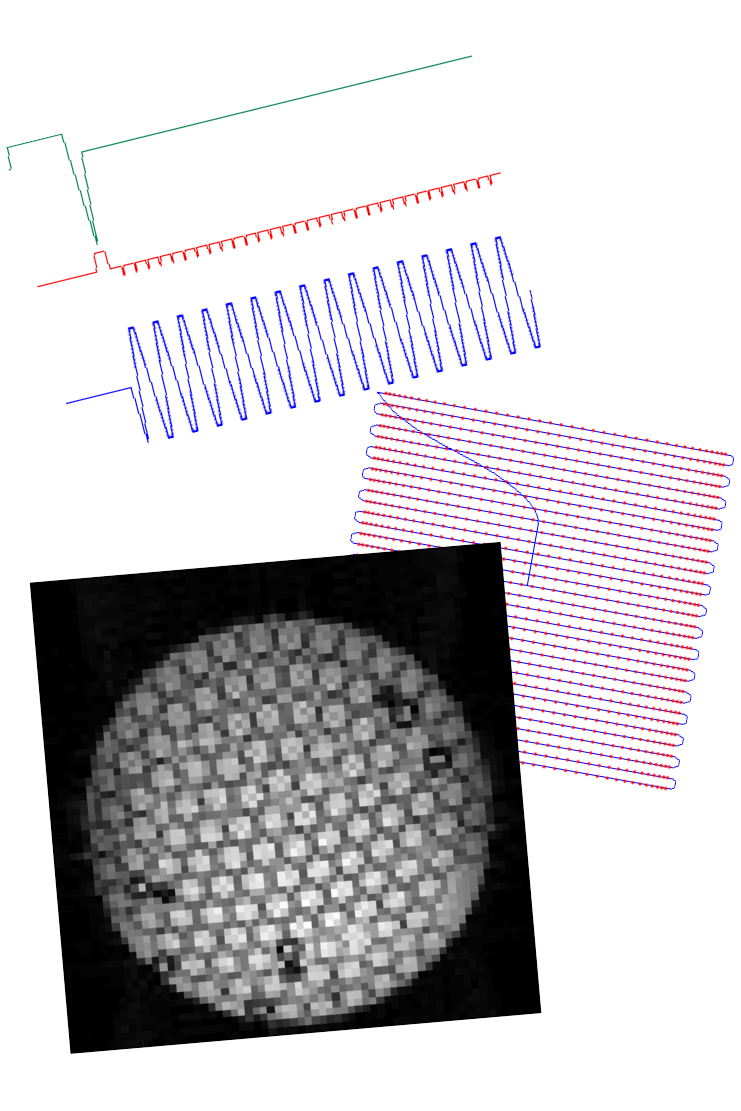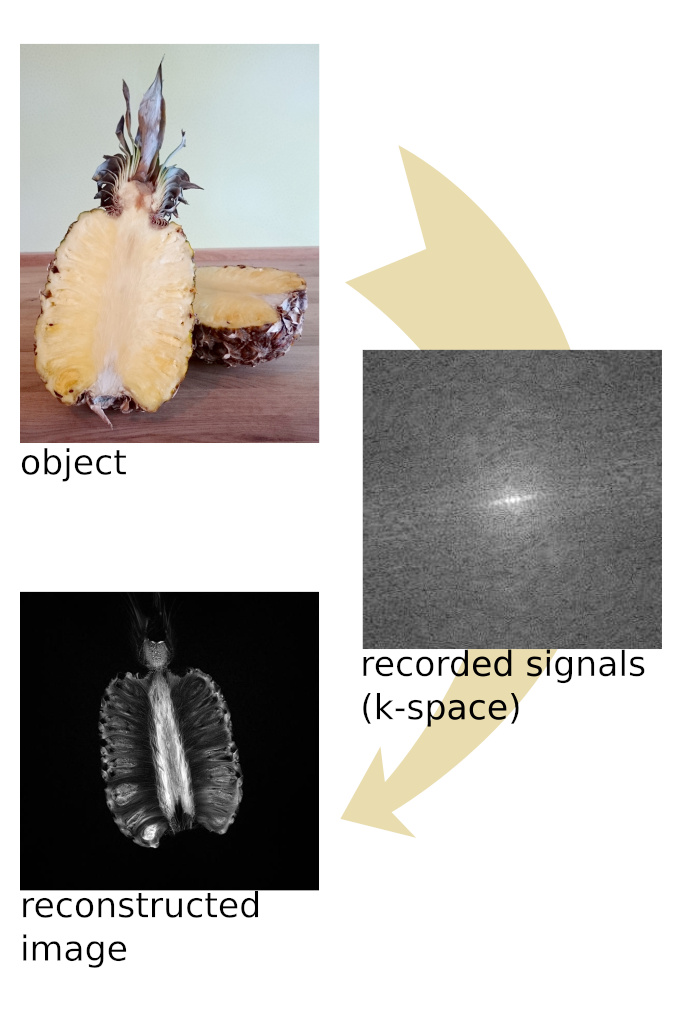The fascinating world of MR pulse sequences and image reconstruction methods
Magnetic resonance methodology
The special feature of MR in contrast to other medical imaging modalities is the diversity of the possible image contrasts and ways in which the information about chemical tissue composition or its physiologic state can be encoded in MR signals. MR imaging typically aims at reconstructing two- or three-dimensional tomographic images of the object under investigation. MR images usually represent a single parameter of the underlying object (e.g. density of water molecules) with a spatial resolution of about 1mm and beyond. The primary goal of MR spectroscopy is resolving object properties or chemical composition, oftentimes without or with less precise spatial localization.
MR pulse sequences are specialized programs that control a particular MR experiment and include radio frequency pulses, gradient switching and data acquisition directives. The composition and timing of the pulse sequence defines which properties of the object or a patient will be encoded in the MR signal. Specialized image reconstruction methods are then used to reconstruct images from the acquired data. Both MR pulse sequences and image reconstruction algorithms comprise the field of MR methodology, which remains to be an active field of research for over three decades.
Pulse sequence prototyping with Pulseq

Development and dissemination of cutting-edge MR acquisition techniques requires implementing the corresponding pulse sequences for each scanner and each manufacturer. Moreover, the developed pulse sequences cannot be typically transferred between the scanners of the same manufacturer running different software versions. Sequence programming in scanner-specific environment is tough skill to acquire, requiring months of tedious education. Additionally, even for a trained MR physicist there is a substantial effort of implementing a completely new technique “from scratch”.
We develop and maintain Pulseq, a vendor-independent pulse sequence development environment. Pulseq allows one to prototype MR sequences off-line in Matlab or Python and then execute them on the scanner using an additional “interpreter pulse sequence”, which only needs to be compiled once.
Pulseq encourages cross-vendor collaboration, harmonization and reproducibility, and rapid research translation. Additionally, Pulseq is an excellent tool for education. For more information check out http://pulseq.github.io
MR image encoding and reconstruction

In magnetic resonance imaging spatial information of the imaged object is encoded in the spectral properties of the acquired signals. In many cases images can be recovered from the k-space data by an application of an inverse Fourier transform. However, for many cutting edge applications it is advantageous to deviate from the full k-space sampling. In this case Fourier reconstruction is replaced with a generic inverse problem solver, capable of taking into account redundancies of the encoding process as well as the statistical image properties. MR image reconstruction based on compressed sensing, data sparsity, machine learning and artificial intelligence is an area of active research in our center.
Research Groups
Andreas Berg | Meyerspeer Gruppe | Schmid Gruppe | Tik Group | Windischberger Gruppe
